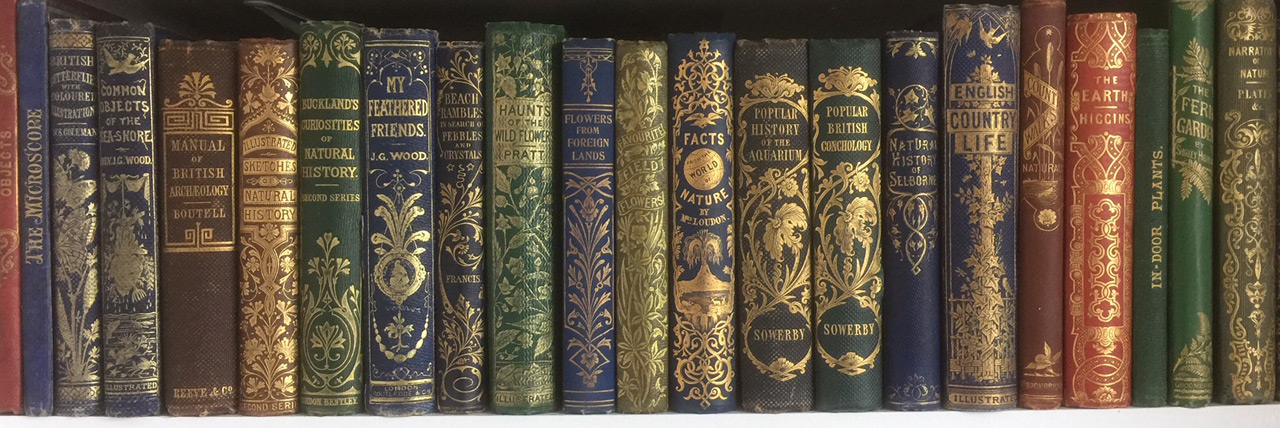
There are many anniversaries in old books but 2020 marked a very important one indeed. It was the bicentennial of the modern book – that is, the 200th birthday of the hardback books we still buy today. Those ‘hard backs’ – ie, the stiff front and back covers – are made of thick card. They always were and they were traditionally covered with leather. But in 1820 London publisher William Pickering instructed his binder to develop a way to cover them with cloth, and the modern book was born. The hardbacks on your shelves are still covered with cloth today.
The arrival of cloth bindings in 1820 meant that books instantly became cheaper, less bulky and lighter to transport. They were also, crucially, easier to make. With a little training a reasonably competent child could assemble a book in minutes by simply glueing the text block into the new cloth covered boards. Binding in leather was – and still is – a long, slow and seriously skilled craft. Cloth books meant more books, which meant more dissemination of information, which meant more progress more quickly. Cloth-covered books changed the world – and I love ’em!
Publishers loved them too. As the decades passed they vied with each other to develop more and more eye-catching covers in brighter colours, gaudier gilt and fancier lettering. The grains and textures of the cloth moved with the fashion; the application of gold, colours and inlays moved with technology. The sport of collecting publishers’ bindings lies in tracking down examples of these developments. Happily, the inside of the book is virtually irrelevant. That glorious row of natural history at the top of the page is interesting to read but there are some expensive titles in the mix. A similarly bright and shiny shelf could be assembled for a fraction of the price by looking out for theology texts, or odd volumes, or biography. It’s that easy.
I am always buying and selling books in publishers’ bindings, including early dust jackets. I take a selection to book fairs and if you are looking for a representative example of a particular binding please get in touch. You’ll find more images in the ‘A New Look at Old Books’ section. There are also some excellent websites showcasing collections and a good few printed books on the subject; by far the best books are those by Mavis Eggle. They are avaliable to buy below.
After the Great Kindle Scare of 2010 it’s a comfort to know that real books are still going strong. The unassuming cloth covering is one of those inventions that has been with us, unchanged, for a surprisingly long time. Along the way it has embraced all aspects of our social history and these echoes of the past live on in the external bindings of the books just as much as they do in the language and sentiments inside. Those cloth covers look set to last…
Resources
Books As They Were Bought: You can see the Mavis Eggle books here, and buy them from Scott Brinded, a leading specialist dealer in bibliographies here.
The British Museum has a long run of minutely catalogued images of gilt cloth bindings here.
There are a good few American institutions holding excellent collections of publishers’ bindings. Oddly enough the American nature of the books does not make them irrelevant on this side of the pond as the evolution of style was very similar and in any case most of the cloth used for the bindings was exported from Britain. You can find an excellent guide to nineteenth century publishers’ bindings here, at The University of Rochester. They are arranged decade by decade. ( This is a source of deep reassurance to bibliophiles; chronological is the only order that matters.)
Here’s a similar collection at The University of North Texas…
another one at Colombia…
…and finally for now, this site explores the role of women in book production from the birth of the book and especially the nineteenth century.


